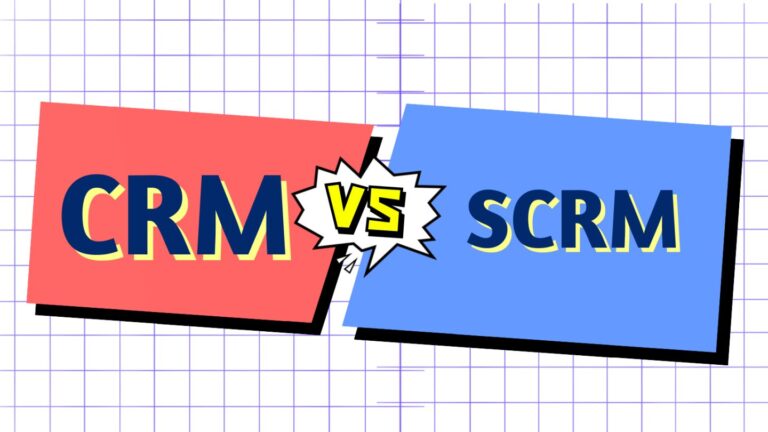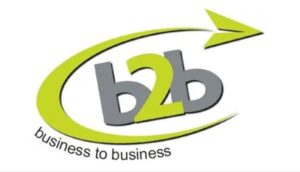Differences Between CRM and SCRM !
- iclick
- 2023-01-30
Concept: CRM means customer relationship management, while SCRM means social customer relationship management. Generally speaking, CRM and SCRM are not only two concepts in the field of management, but also involve various tools and methods to help marketing and business growth in a company. With the development of technology, the management of a company becomes more complicated than before. To adapt to new situations better, companies have to introduce new ways and tools that are helpful to sales growth. As products of the information times, CRM and SCRM all play important roles in a firm’s operation

CRM tools or systems are used by companies to improve revenue. CRM tools are designed for helping companies to manage their relationship with customers and winning clients’ trust. Thanks to CRM tools, companies can maintain a good relationship with their customers easier. However, the world is ever-changing and technology is also updating. To provide convenience for people’s communication, social media has become popular among people in daily life. People are accustomed to communicating in life and work through social platforms gradually. To keep up with the change, CRM tools have to be adjusted in functions to be more competitive with the support of integration with popular social channels. Then SCRM is developed and used by most firms to help them obtain effective leads from the interaction of customers on social platforms.
Function
CRM tools help companies collect data on customers’ behaviours, supplying valuable reference material for companies to make wiser decisions. The use of CRM is to manage customer relationships, which also helps companies to form the awareness of putting customer experience as their priority in making or adjusting their operating strategies. Directed by the customer-oriented strategy, companies often summarize and analyze what customers hope to get from their service or products. Based on effective leads on CRM tools, they optimize their products for customers’ satisfaction and loyalty. In the whole process, CRM helps companies reduce sales cycle and cost, seeking new markets and channels to expand their business.
SCRM, as the extension of traditional CRM, mainly emphasizes the involvement of customers and bilateral interaction. Customers not only exist in the static status as owners of things, but in the dynamic status of fans, suggesters and contributors of a brand. Thanks to SCRM, users can freely communicate with each other and share their opinions on brands, helping companies know about the shortcomings of their products, service and marketing. Firms could build customers’ brand loyalty by SCRM, making a perfect integration between customers’ demand and brand building. Meantime, the interaction with brands supported by SCRM also makes customers feel a sense of achievement, motivating them to support those brands’ development continuously.
Management Ideas
CRM highlights the management of customers, involving professional tools used to simplify internal processes and integrate processes and documents about sales, service, and feedback. From the perspective of customers, CRM pays attention to the management of clients but neglects the interaction between customers and businesses. Customers seldom obtain opportunities to interact with companies directly and just get information from calls, salespersons, e-mails and websites when companies choose CRM as a part of management. Although CRM is also a management idea that a company should attach importance to consumers, consumers don’t be given the initiative in the process of a transaction.
SCRM emphasizes the cooperation between customers and companies for brand construction. Customers are not only just deemed as objects of management but a vital part of the operation of companies. SCRM takes customer data as the most important marketing asset of firms, offering guidance for successful marketing strategies. Companies can complete a user profile through SCRM for comprehensive information on customers. What’s more, customers could enjoy more freedom to share their ideas about brands and have more initiative in their interaction with firms when SCRM is used by enterprises.
Goals
CRM is a kind of tool used to improve internal management within a firm. It often plays an important role in evaluating the performance of salespersons and regulating the service of employees. Traditional CRM mainly involves the selling of software or systems, recording customers’ history orders, inputting information by salespersons, customer service staff and after-sales service workers, and outputting part of datasheets by the system. Overall, the goal of CRM is to play a role in the improvement of management efficiency within an organization.
SCRM is the extension of a business marketing system oriented to users. SCRM takes each contact with customers as an opportunity to communicate with them. Based on the information obtained from contact with clients, SCRM provides content that customers need to influence them comprehensively. Meanwhile, the social networking of each customer is integrated into companies’ marketing systems. The above aims of SCRM can’t be achieved by traditional CRM. In brief, SCRM aims at improving the marketing systems of firms through leads supplied by all social channels.
Focus
CRM is a tool used to manage customers by companies, focusing on the key stages in the process of selling. Firms analyze various data indicators through CRM systems, such as customer retention, customers’ attention to products, and the time and frequency of purchasing, to optimize the process of business and promote collaborative efficiency within a company. However, firms seldom interact with customers through systems and their interactions are often unilateral via phone, message and email. With the appearance of social media, customers tend to communicate with others in new ways, which reduces the efficiency of marketing.
SCRM focuses on bilateral interaction between businesses and customers, customer operation, the nurture of customers and conversion rate. SCRM emphasizes the integration with social networking and the connection with more customers from social channels, collects data on users’ behaviours through the record of socializing, and finishes persona through enrichment of users’ personalized tags for refined management of customers. In a word, SCRM highlights the combination of the advantages of popular social platforms in order to improve conversion rate.
Differences Between CRM and SCRM | ||
| CRM | SCRM |
Concept | Customer relationship management | Social customer relationship management |
Function | Collect data on customers’ behaviours | Emphasize the involvement of customers and bilateral interaction |
Management Ideas | Highlight the management of customers | Emphasizes the cooperation between customers and companies for brand construction |
Goals | Improve internal management within a firm | Improve the marketing systems of firms through leads supplied by all social channels. |
Focus | The key stages in the process of selling | Bilateral interaction between businesses and customers, customer operation, the nurture of customers and conversion rate |
Summary
Overall,CRM and SCRM have totally different meanings from above aspects. SCRM is developed on the ground of CRM with the support of technology. Compared with CRM, SCRM can help companies to adapt to the new market surroundings better and improve their marketing, service and products from the perspective of customers.



